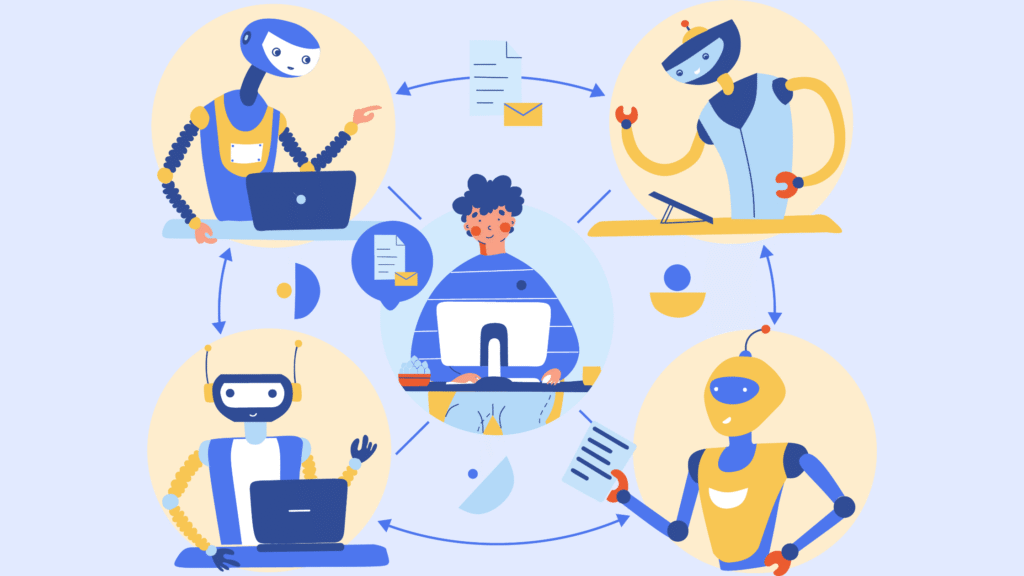The Rise of AI-Powered Content Services in 2025: Revolutionizing Content Creation or Threatening Human Creativity?
AI-Powered Content Services: Revolutionizing Content in 2025
In 2025, AI-powered content services have cemented their position in the digital marketing ecosystem. These platforms are no longer viewed as gimmicks but as essential productivity tools reshaping how content is planned, created, and distributed. From lean startups to global agencies, the demand for AI-powered content services has exploded, driven by their ability to generate content faster, at scale, and often at a fraction of the traditional cost.
Changing the Rules of Content Creation
Gone are the days when content production involved lengthy brainstorming sessions and hours of drafting. Today, AI tools like Jasper, Copy.ai, Writesonic, and ChatGPT are used to ideate blog topics, write introductions, summarize sources, and even compose full articles. AI-generated outlines help writers break through creative blocks, and auto-suggestions accelerate copywriting tasks. With just a short prompt, a marketing professional can receive multiple article drafts tailored to brand voice and style.
AI-powered content services have also evolved beyond text. They now handle visuals and multimedia too. Tools like Midjourney and DALL·E generate images for blog headers and social posts, while Synthesia creates AI avatars to deliver script-based video content. These capabilities allow marketers to streamline campaigns, reduce dependency on large creative teams, and maintain consistency across formats.
While the benefits are clear, the implications are complex.

Is Creativity Under Threat?
This evolution brings up a polarizing question: Are AI-powered content services threatening human creativity? The concern is understandable. After all, machines are now performing tasks once reserved for human writers, designers, and editors. But it’s important to recognize that the rise of automation doesn’t necessarily equate to the fall of originality.
In most cases, AI doesn’t replace creators—it enhances them. Human input remains essential to guide tone, emotion, cultural nuance, and ethical decision-making. AI can write a blog post, but it can’t understand the subtleties of sarcasm, regional dialects, or emotional storytelling the way a human can.
In fact, some of the most successful content strategies in 2025 involve hybrid workflows, where AI-powered content services generate drafts, outlines, or promotional blurbs, and humans polish them for authenticity and connection. This partnership between humans and machines ensures higher efficiency without sacrificing creativity.
SEO and Personalization at Scale
Perhaps one of the most compelling reasons marketers are adopting AI-powered content services in 2025 is their ability to enhance SEO and personalization. Algorithms now analyze trending keywords, search intent, and user behavior in real-time—generating optimized content tailored to both search engines and audiences.
Instead of relying solely on human keyword research, AI platforms integrate with tools like SEMrush, Ahrefs, and Google Search Console to offer intelligent suggestions. Marketers input their target keyword, and within seconds, the AI proposes subheadings, content gaps, and optimal word counts. The result? Faster production of content that’s more likely to rank.
On the personalization front, AI tools use CRM data and user interactions to dynamically tailor content. Email sequences, product descriptions, and landing page copy can be generated and adjusted in real time based on user personas, preferences, and behaviors. This ability to scale tailored messaging was nearly impossible a decade ago.
Ethics, Plagiarism, and the Black Box Problem
Despite its advantages, AI content generation isn’t without risk. One of the primary concerns in 2025 is the “black box” nature of many AI platforms—where content is generated from vast datasets with little visibility into the sources used. This raises issues of plagiarism, misinformation, and brand safety.
To combat this, leading companies are implementing AI content guidelines and human review layers. Some platforms now offer citation trails and originality scores, giving businesses more confidence in using generated content publicly. Still, the burden remains on content teams to fact-check and add unique value.
Ethical use of AI-powered content services also involves transparency. Brands that openly communicate their use of AI in content creation are often viewed as more trustworthy. For example, some websites now label AI-assisted content clearly or provide a “created with AI assistance” disclaimer at the end of articles.

Upskilling and the Future Workforce
Another major shift is how digital marketers are upskilling to work with AI rather than against it. Content creators today are learning prompt engineering, training custom AI models, and developing brand-specific datasets to fine-tune AI outputs. Copywriters are evolving into content strategists and editors, overseeing large volumes of AI-assisted material and ensuring brand alignment.
In this environment, value comes from judgment, strategic thinking, and emotional intelligence—areas where humans still excel. The best-performing teams in 2025 are not those that resist AI, but those that integrate it intelligently.
Strategic Adoption Wins the Day
As AI continues to develop, it’s tempting to automate everything. But wise marketers know that AI-powered content services are most effective when used selectively and strategically. Not all content should be AI-generated. Thought leadership, deep opinion pieces, and complex storytelling still benefit from a human-first approach.
Organizations that adopt a “human-in-the-loop” model—where AI handles volume and humans ensure quality—see the most sustainable success. In this way, content creation becomes faster, more data-driven, and scalable, without losing the brand’s soul.
Frequently Asked Questions
What are AI-powered content services?
AI-powered content services are platforms that use artificial intelligence to generate, optimize, and manage content. These tools assist in writing, designing, and personalizing content across blogs, websites, and social media.
How do AI tools help digital marketers in 2025?
In 2025, AI tools help digital marketers by automating content creation, enhancing SEO, personalizing messaging, and improving campaign efficiency. They allow faster content output with data-driven insights.
Will AI replace human content creators?
AI won’t replace human creators entirely. Instead, it complements their work by handling repetitive tasks, enabling creators to focus on strategy, creativity, and emotional storytelling.
Are there ethical concerns with AI-generated content?
Yes, ethical concerns include potential plagiarism, misinformation, lack of transparency, and the ‘black box’ nature of AI models. Responsible use and human oversight are essential.

















